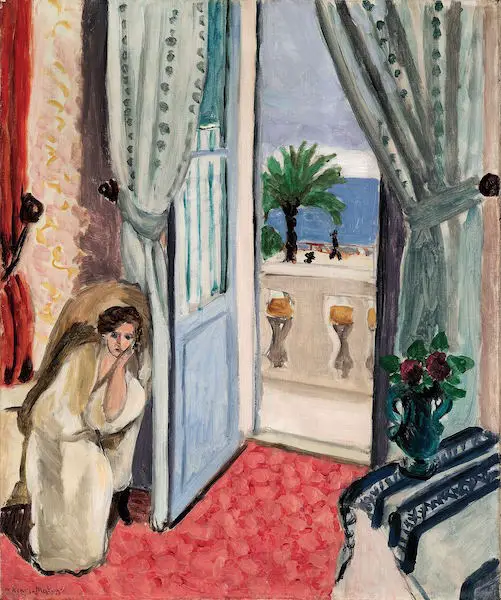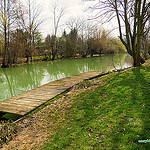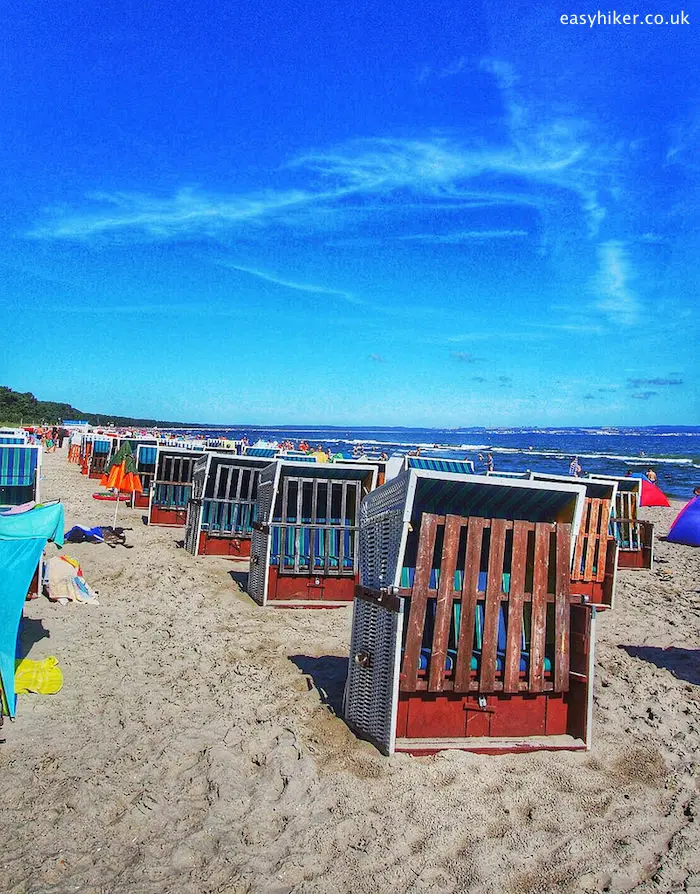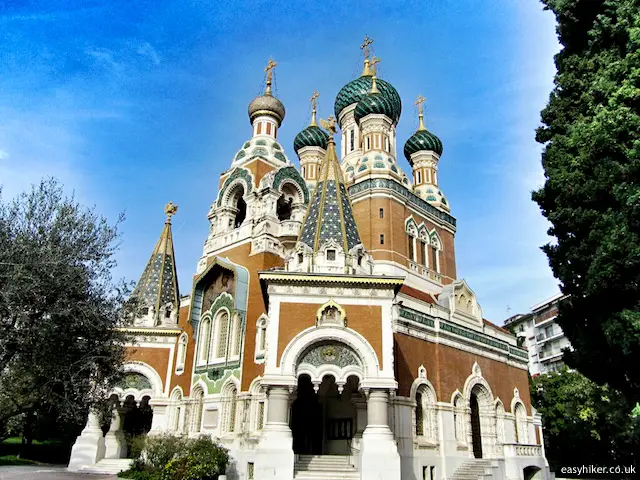Here is a strange thing: some neighbouring cities, although physically very close to each other, have a totally different look and feel.
Take Nîmes and Arles, two close neighbours in the south of France. They share, inevitably, some characteristics, but it is the differences that stick out.
Arles is the quintessential small town in Provence: mazes of narrow streets lined by picturesque, if slightly ramshackle two-story homes …

… while Nîmes boasts broad boulevards and handsome Belle Epoque buildings.

And while Arles has van Gogh, Nimes has decorative street art …

… making it feel a little like the Paris of the South.

But before we took some time to enjoy the charms of Nîmes, we first made our way directly to the Fontaine Gardens of Nîmes (Les Jardins de la Fontaine), famous for being one of the oldest public parks in Europe.
The Jardins were designed in the mid 18th century by Jacques-Philippe Mareschal to celebrate the origins of the city’s history: the springs of La Fontaine around which Nîmes had been founded, centuries before the Romans arrived in the 2nd century BC. (It was already part of the Roman Empire when Caesar launched his Bellum Gallicum.)
Mareschal decided to concentrate his design on the motif of water, surrounding the gardens with a network of purpose-built canals. The result is very picturesque but also betrays Marechal’s grounding in military architecture.
He served Louis XV as the Director of Fortifications for the entire southwest of the country – and certainly knew how to draw a straight line.
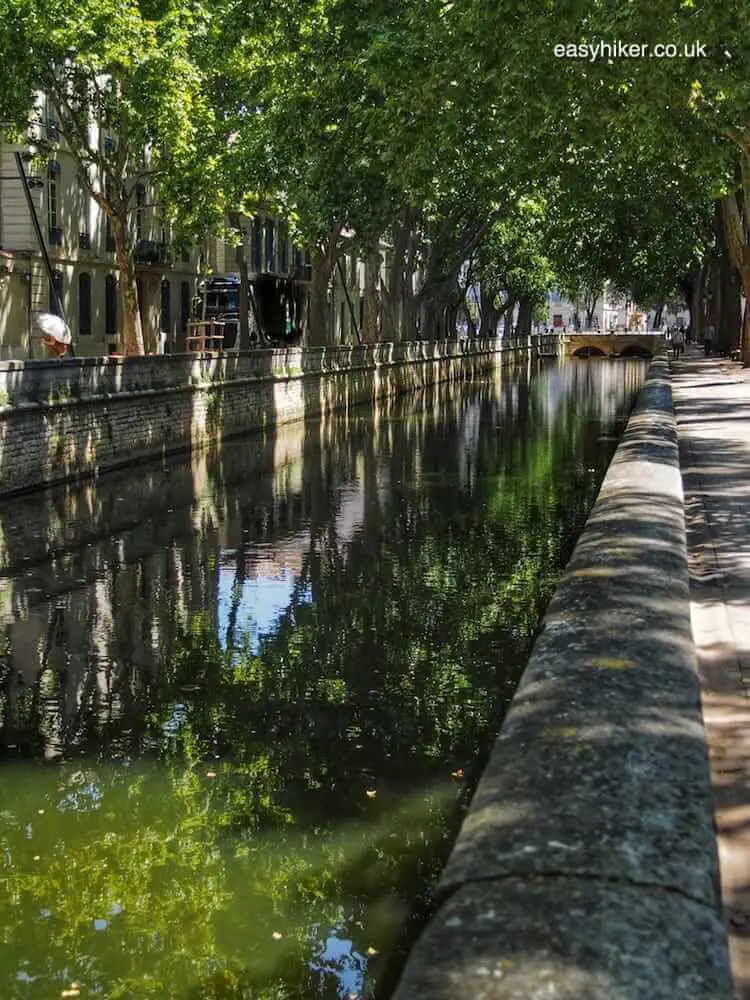
Outside of the canal system, you will not see many straight lines in Mareschal’s gardens: Rococo aesthetics reign throughout.

The Roman connections of the site were only unearthed in the course of the excavations that were performed for the garden project. Several Roman monuments were found, of which only the mysterious “Temple of Diane“ was thought worth preserving.
What exact purpose this building served has remained uncertain ever since. Every archaeologist or historian appears to have his or her own opinion, and they can only agree with each other on two things: that the building was not a temple (it does not have the floor plan of one) and that it was not dedicated to Diana (there is no evidence to support such an assumption).
So the greatest mystery connected with the “Temple of Diane“ may very well be why this label was ever attached to it – and how it got stuck for 300 years.

The “temple” was built during the time of the Emperor Augustus and probably served – as did the other, no longer existing monuments – as a site for an Imperial cult. You can freely step inside, walk around and enjoy the spooky atmosphere of an ancient ruin.
This must be one of the oldest buildings in Europe where you are allowed to do that.

The Fontaine Gardens of Nîmes were originally conceived as a sequence of several decks, but only the lower deck was completed at the time.
Everything beyond the ground level was landscaped in the early 1900s …
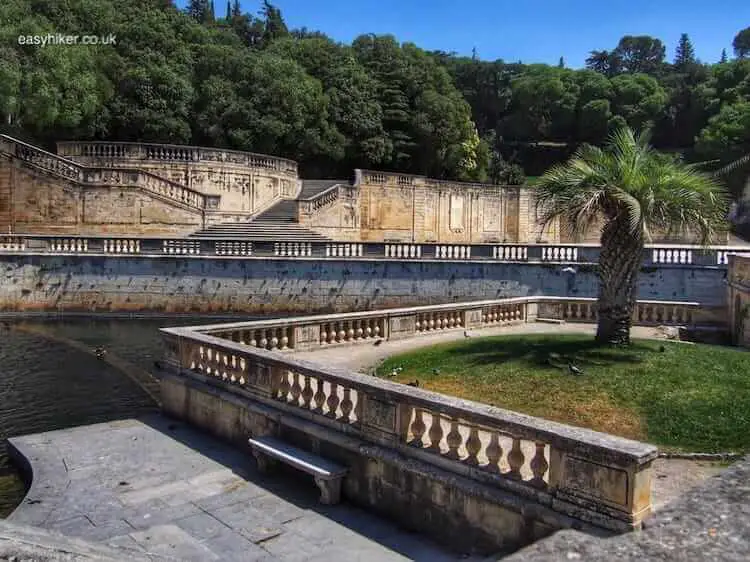
.. seemingly with the instruction: Amuse us!, following the blueprint of the Butte Chaumont in Paris, with a sequence of grottoes …

… and ensembles of exotic plants and flower beds that are carefully arranged to highlight views and sights.

In that respect, the new section of the Fontaine Gardens of Nîmes matches the Rococo gardens on the ground floor rather well. The imperative of “amusing” the park’s visitors is the same, only the tastes of the time have changed, the jaded appetites of the aristocracy giving way to the excitable urban bourgeoisie’s hunger for the brash, the spectacular, the new.
At the very top of Mont Cavalier, you will find the Magne Tower, the site’s second famous ancient monument. The tower’s oldest section – the entire bottom third – actually predates the arrival of the Romans by a hundred years or so (which may explain why the tower looks so unclassically bulky).
But it was the Romans’ idea to raise the tower to its current height of more than 30 metres. In Roman times, it was even a few metres higher than it is now.
As with the “Temple of Diana”, it is not entirely clear why the tower was built in the first place. It was probably a part of the town fortifications, possibly also a mere demonstration of Roman power.

The Roman tradition is, of course, what unites Nîmes and Arles. Both towns were large enough to accommodate amphitheatres that seated well over 20,000 spectators, and both towns converted these theatres first into protective shells for residential dwellings and later into bull-fighting arenas.

On top of its Roman arena, Nîmes also has the Maison Carrée, perhaps the best-preserved Roman temple anywhere in the world.

At some stage, however, Nîmes and Arles appear to have gone off in different directions. What seems to have happened is that, when faced with the challenges of modernity, Arles withdrew into the shell of the familiar, turning its gaze inside, while Nîmes opened up, looking to the outside world.
Factors such as size and status may have played a part (Nîmes has generally been the bigger of the two, although the gap seems to have widened in recent times, and is the capital of its département, while Arles has always lived in the shadow of near-by Marseille), but one feels that the cities may have looked more similar to each other in the past.
Still, decisions of how to face the future appear to have been made, and we can still hear their distant echo, 150 years after the event.


